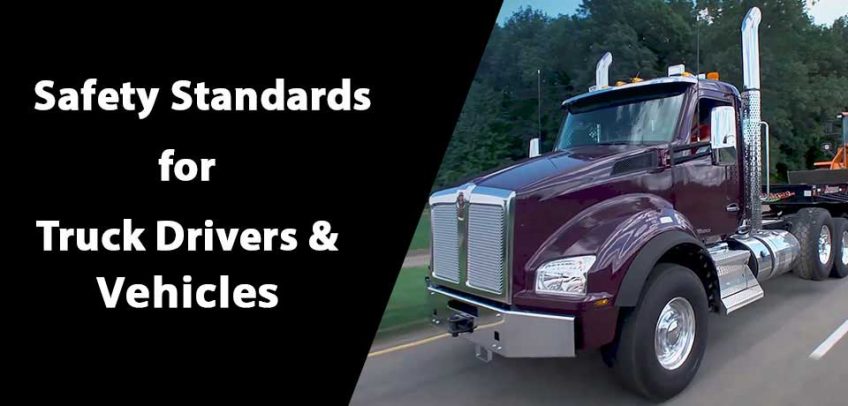
SAFETY STANDARDS FOR TRUCK DRIVERS & VEHICLES

Truck driving can be a rewarding and long term career, but it can also be one of the most dangerous jobs out there. With the danger it brings to the driver, there are safety standards in place to try to avoid property damage, injury, and death.
Some safety standards and expectations that are placed on drivers come from the companies they work for. Companies will have additional rules and guidelines about what can and should be done before, during, and after a trip to make sure their drivers are safe. In addition to that, there are federal and state standards that have to be followed by everyone.
Driving safe should be the top priority for every driver. While many drivers might feel stressed, or under pressure to cut corners, it’s more important that you and your truck come home in one piece.
Here are a few truck driver safety tips, so you can be prepared to be safe on the road.
WHAT ARE THE OSHA STANDARDS FOR TRUCK DRIVERS, AND OSHA VEHICLE REQUIREMENTS?
While you are driving in your truck, OSHA is not responsible for your safety, but the Department of Transportation (DOT) has jurisdiction.
However, while loading, unloading, or doing anything that does not include driving on the roads, OSHA regulations are in effect. This means OSHA can regulate the safety of the warehouse, dock, rig, construction site, airport terminal, or any other location truckers go to deliver and pick up their loads. Consult the OSHA working standards for the trucking industry to find out more about the exact safety standards that are in place.
WHAT ARE THE DEPARTMENT OF TRANSPORTATION (DOT) REGULATIONS FOR TRUCK DRIVERS?
The Federal Motor Carrier Safety Administration (FMCSA) is a part of the DOT in charge of all regulations for truck driving. Since truck driving can include a wide variety of jobs and cargo, there is a matching amount of complexity when dealing with the regulations from FMCSA.
Make sure you know which FMCSA regulations apply to you each time you drive.
WHAT ARE SOME GENERAL SAFETY STANDARD TIPS?
While OSHA and DOT have regulations that cover a wide selection of topics, there are some common suggestions and guidelines that apply to all truck drivers.
Do Not Break the 14-Hour Rule
One of the biggest truck driver safety requirements is following the hours of service regulations. A driver can only start driving after a period of 10 uninterrupted hours of not driving and then is only allowed 14 consecutive hours for driving. During those 14 hours of driving, only 11 of those hours are allowed to be behind the wheel of a vehicle.
The 14-hour window starts as soon as a driver begins any kind of work for a carrier, even if they are not actively driving their truck. The window doesn’t stop if you take a break for food, exercise, or even a short nap, and only resets after 10 complete hours of inactivity.
If a driver does not follow this regulation they put themselves at risk for fatigue, stress, and lack of attention, which increases the chance for errors and accidents. In addition, if you are caught violating this regulation you may:
- Be forced to stop on the side of the road until you have taken a break long enough to be back on the road
- Receive a fine of up to $11,000 per violation
- Have the violation on your driving record, which will affect your insurance costs and employability
And you may even have your license revoked.
Take Your Breaks
After being on duty for 8 hours, you must take a break that is a minimum of 30 minutes long. Some drivers try to short this by getting on the road after 25 minutes, but the laws and regulations say it is a minimum of 30 minutes.
Not only is it good to stretch your legs and get out from behind the wheel, but it is the law. Being even a few minutes early off a break can cost you fines and can appear on your driving record when you are caught.
It might feel like there are endless regulations and safety standards to go through when dealing with driving, but it is your job to make sure you are safe for yourself and those on the road with you. Your job is to safely transport your cargo, not to recklessly race to the finish line.




